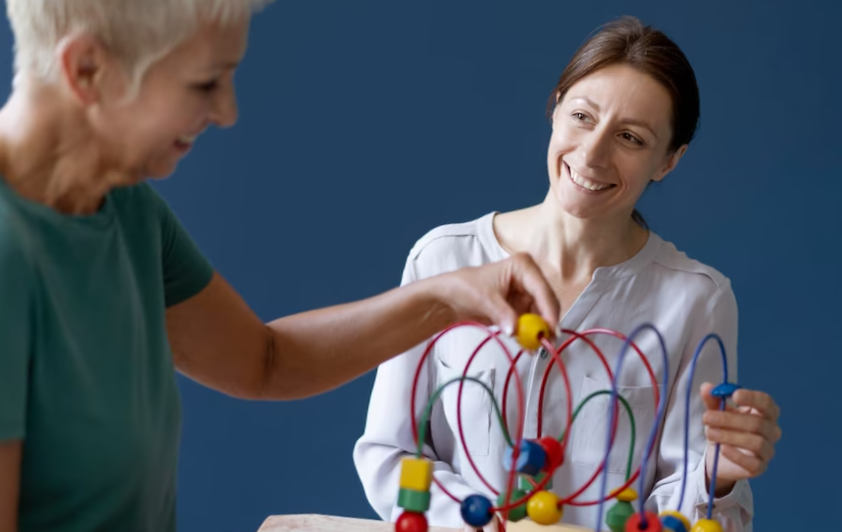Dementia and Alzheimer’s disease are common and serious brain disorders that affect millions of older adults worldwide. They cause problems with memory, thinking, behavior, and daily functioning. They can have a devastating impact on the quality of life of those affected and their caregivers. However, there is hope. Research has shown that there are ways to prevent and manage dementia and Alzheimer’s disease. In this article, we will explore how aging and senior health can be improved by addressing three aspects of dementia and Alzheimer’s disease: prevention and risk factors, early detection and diagnosis, and treatment and care.
What We'll Cover
Prevention and Risk Factors

One of the best ways to protect the brain from dementia and Alzheimer’s disease is to prevent or reduce the risk factors that contribute to their development. Some of the risk factors for dementia and Alzheimer’s disease include age, genetics, cardiovascular disease, diabetes, obesity, smoking, depression, and cognitive inactivity. While some of these factors are not modifiable, such as age and genetics, others can be influenced by lifestyle choices, such as fitness and exercise.
Fitness and exercise can help prevent or reduce the risk factors for dementia and Alzheimer’s disease by improving the physical and mental health of the individual.
| Fitness and exercise can have several benefits for the brain |
| • Improving blood flow and oxygen delivery to the brain, which can enhance brain function and prevent brain damage. • Reducing inflammation and oxidative stress in the brain, which can cause neuronal death and impair cognitive function. • Increasing the production of growth factors in the brain, such as brain-derived neurotrophic factor (BDNF), which can stimulate the growth of new brain cells and connections. • Enhancing the plasticity of the brain, which is the ability of the brain to adapt and reorganize itself in response to new experiences and challenges. •Boosting the mood and reducing stress levels, which can lower the risk of depression and anxiety. |
Research has shown that fitness and exercise can lower the risk of developing dementia and Alzheimer’s disease by up to 50%. Moreover, fitness and exercise can also delay the onset of symptoms and slow down the progression of these conditions.
Another lifestyle choice that can help prevent or reduce the risk factors for dementia and Alzheimer’s disease is diet.
| Diet can affect the brain in various ways |
| • Providing essential nutrients for brain health, such as antioxidants, omega-3 fatty acids, vitamins, minerals, and phytochemicals. • Preventing or controlling chronic diseases that can damage the brain, such as diabetes, hypertension, high cholesterol, obesity, and stroke. • Modulating the gut microbiome, which can influence the immune system, inflammation, neurotransmitters, hormones, and brain function. |
Research has shown that following a healthy diet can lower the risk of developing dementia and Alzheimer’s disease by up to 40%. Some examples of healthy diets that have been associated with lower risk of dementia and Alzheimer’s disease are the Mediterranean diet, the DASH diet, and the MIND diet.
Early Detection and Diagnosis

Another way to protect the brain from dementia and Alzheimer’s disease is to detect and diagnose them as early as possible. Early detection and diagnosis can help individuals access appropriate treatments and interventions that can improve their outcomes and quality of life. However, detecting and diagnosing dementia and Alzheimer’s disease can be challenging because they often have subtle and gradual symptoms that may be overlooked or attributed to normal aging.
Fitness and exercise can help with early detection and diagnosis of dementia and Alzheimer’s disease by enhancing cognitive performance and revealing cognitive decline. Fitness and exercise can improve cognitive performance by increasing brain activity, efficiency, connectivity, and reserve. However, fitness and exercise can also expose cognitive decline by making it more noticeable when individuals struggle with tasks that they used to perform easily.
Research has shown that fitness and exercise can improve cognitive performance in healthy older adults as well as in those with mild cognitive impairment (MCI), which is a precursor to dementia . Moreover, fitness and exercise can also help identify individuals who are at high risk of developing dementia or Alzheimer’s disease by measuring their cognitive response to exercise interventions.

Another way to help with early detection and diagnosis of dementia and Alzheimer’s disease is to use screening tools and diagnostic tests. Screening tools are simple tests that can be done at home or in a clinic to assess memory, thinking, language, orientation, attention, and other cognitive functions. Diagnostic tests are more complex tests that can be done in a hospital or a specialized center to confirm or rule out a diagnosis of dementia or Alzheimer’s disease. Diagnostic tests may include blood tests, brain scans, genetic tests, and neuropsychological tests.
Research has shown that screening tools and diagnostic tests can help detect dementia and Alzheimer’s disease at an early stage, when treatments and interventions may be more effective. However, screening tools and diagnostic tests are not perfect and may have limitations, such as false positives, false negatives, cost, availability, and ethical issues.
One of the most promising areas of research for early detection and diagnosis of dementia and Alzheimer’s disease is biomarkers. Biomarkers are biological indicators that can be measured in the blood, urine, saliva, cerebrospinal fluid, or brain tissue to reflect the presence or progression of a disease. Biomarkers can help diagnose dementia and Alzheimer’s disease with more accuracy and specificity than current methods. Biomarkers can also help monitor the response to treatments and interventions and predict the future course of the disease.
Research has identified several potential biomarkers for dementia and Alzheimer’s disease, such as amyloid-beta, tau, neurofilament light, and neuroinflammation. However, biomarkers are still under investigation and need to be validated in large-scale studies before they can be used in clinical practice.
Treatment and Care

The third way to protect the brain from dementia and Alzheimer’s disease is to treat them effectively once they are diagnosed. Currently, there is no cure for dementia or Alzheimer’s disease. However, there are treatments that can help manage their symptoms and improve their quality of life. These treatments include medications that target specific neurotransmitters in the brain as well as non-pharmacological interventions that address various aspects of physical, mental, social, and emotional well-being.
Medications for dementia and Alzheimer’s disease can help improve memory, thinking, communication, and behavior by increasing the levels of acetylcholine or glutamate in the brain. Acetylcholine and glutamate are neurotransmitters that are involved in learning and memory. Medications for dementia and Alzheimer’s disease include cholinesterase inhibitors, such as donepezil, rivastigmine, and galantamine, and NMDA receptor antagonists, such as memantine. However, medications for dementia and Alzheimer’s disease are not effective for everyone and may have side effects, such as nausea, vomiting, diarrhea, headache, dizziness, and confusion.
Non-pharmacological interventions for dementia and Alzheimer’s disease can help enhance cognitive function, mood, behavior, and quality of life by stimulating the brain and providing social and emotional support. Non-pharmacological interventions for dementia and Alzheimer’s disease include cognitive training, cognitive stimulation, cognitive rehabilitation, music therapy, art therapy, reminiscence therapy, physical activity, occupational therapy, speech therapy, nutrition counseling, environmental modification, and caregiver education. However, non-pharmacological interventions for dementia and Alzheimer’s disease need to be tailored to the individual’s needs, preferences, abilities, and goals.
One of the most important aspects of treatment and care for dementia and Alzheimer’s disease is specialized care models and support for caregivers. Specialized care models are programs that provide coordinated and comprehensive care for people with dementia and Alzheimer’s disease and their caregivers. Specialized care models may involve multidisciplinary teams of health professionals, such as geriatricians, neurologists, psychiatrists, nurses, social workers, pharmacists, and psychologists. Specialized care models may also involve community-based services, such as home care, respite care, adult day care, assisted living facilities, nursing homes, hospice care, and palliative care. Specialized care models can help improve the quality of care and outcomes for people with dementia and Alzheimer’s disease and their caregivers by reducing hospitalizations, emergency visits, complications, burden, stress, depression, anxiety, and isolation.
Support for caregivers is essential for the well-being of both the person with dementia or Alzheimer’s disease and the caregiver. Caregivers are often family members or friends who provide unpaid care for a person with dementia or Alzheimer’s disease. Caregivers may face many challenges and difficulties in their role, such as physical exhaustion, emotional distress, financial strain, social isolation, and reduced quality of life. Support for caregivers can help them cope with these challenges and difficulties by providing information, education, training, counseling, peer support groups, respite services, financial assistance, legal advice, and advocacy. Support for caregivers can help them improve their health and well-being as well as their ability to provide quality care for their loved ones.
Conclusion
Dementia and Alzheimer’s disease are common and serious brain disorders that affect millions of older adults worldwide. They cause problems with memory, thinking, behavior, and daily functioning. They can have a devastating impact on the quality of life of those affected and their caregivers. However, there is hope.
The responses below are not provided, commissioned, reviewed, approved, or otherwise endorsed by any financial entity or advertiser. It is not the advertiser’s responsibility to ensure all posts and/or questions are answered.






